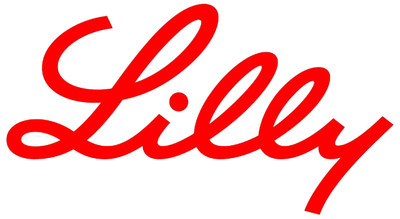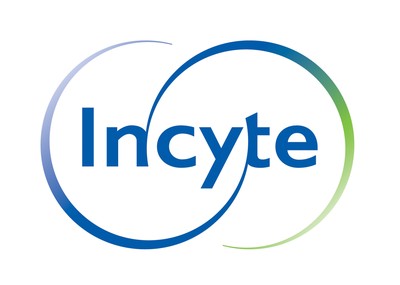Baricitinib in Combination with Remdesivir Reduces Time to Recovery in Hospitalized Patients with COVID-19 in NIAID-Sponsored ACTT-2 Trial
- Study Met Primary Endpoint of Reduction of Time to Recovery
- Additional Analyses Ongoing to Understand Other Clinical Outcome Data
- Lilly's Phase 3 Randomized, Double-Blind, Placebo-Controlled Study of Baricitinib Continues
Study investigators noted an approximately one-day reduction in median recovery time for the overall patient population treated with baricitinib in combination with remdesivir versus those treated with remdesivir. This finding was statistically significant. Recovery was defined as the participant being well enough for hospital discharge, meaning the participant either no longer required supplemental oxygen or ongoing medical care in the hospital, or was no longer hospitalized at Day 29. The study also met a key secondary endpoint comparing patient outcomes at Day 15 using an ordinal 8-point scale ranging from fully recovered to death.
An independent data and safety monitoring board overseeing the double-blind, randomized controlled trial met regularly throughout the trial to review safety data. Additional analyses are ongoing to understand other clinical outcome data, including mortality and safety data. NIAID is expected to publish full details of the study in a peer-reviewed journal.
"We are pleased with these data from the ACTT-2 study," said
"These findings from ACTT-2 are another step as we improve the care of these patients," said
Based on the ACTT-2 data,
"As a company, we've moved quickly to develop and evaluate medicines for patients for the prevention and treatment of COVID-19," said
Baricitinib, a JAK1/JAK2 inhibitor licensed to
About
Indication and Usage for OLUMIANT (baricitinib) tablets (in the
OLUMIANT ® (baricitinib) 2-mg is indicated for the treatment of adult patients with moderately to severely active rheumatoid arthritis who have had an inadequate response to one or more tumor necrosis factor (TNF) antagonist therapies. Limitation of Use: Not recommended for use in combination with other JAK inhibitors, biologic disease-modifying antirheumatic drugs (DMARDs), or with potent immunosuppressants such as azathioprine and cyclosporine.
IMPORTANT SAFETY INFORMATION FOR OLUMIANT (baricitinib) TABLETS
WARNING: SERIOUS INFECTIONS, MALIGNANCY, AND THROMBOSIS
SERIOUS INFECTIONS: Patients treated with Olumiant are at risk for developing serious infections that may lead to hospitalization or death. Most patients who developed these infections were taking concomitant immunosuppressants such as methotrexate or corticosteroids. If a serious infection develops, interrupt Olumiant until the infection is controlled. Reported infections include:
- Active tuberculosis (TB), which may present with pulmonary or extrapulmonary disease. Test patients for latent TB before initiating Olumiant and during therapy. If positive, start treatment for latent infection prior to Olumiant use.
- Invasive fungal infections, including candidiasis and pneumocystosis. Patients with invasive fungal infections may present with disseminated, rather than localized, disease.
- Bacterial, viral, and other infections due to opportunistic pathogens.
Carefully consider the risks and benefits of Olumiant prior to initiating therapy in patients with chronic or recurrent infection.
Closely monitor patients for the development of signs and symptoms of infection during and after treatment with Olumiant including the possible development of TB in patients who tested negative for latent TB infection prior to initiating therapy.
MALIGNANCIES: Lymphoma and other malignancies have been observed in patients treated with Olumiant.
THROMBOSIS: Thrombosis, including deep venous thrombosis (DVT) and pulmonary embolism (PE), has been observed at an increased incidence in patients treated with Olumiant compared to placebo. In addition, there were cases of arterial thrombosis. Many of these adverse events were serious and some resulted in death. Patients with symptoms of thrombosis should be promptly evaluated.
WARNINGS AND PRECAUTIONS
SERIOUS INFECTIONS: The most common serious infections reported with Olumiant included pneumonia, herpes zoster and urinary tract infection. Among opportunistic infections, tuberculosis, multidermatomal herpes zoster, esophageal candidiasis, pneumocystosis, acute histoplasmosis, cryptococcosis, cytomegalovirus and BK virus were reported with Olumiant. Some patients have presented with disseminated rather than local disease and were often taking concomitant immunosuppressants such as methotrexate or corticosteroids. Avoid Olumiant in patients with an active, serious infection, including localized infections. Consider the risks and benefits of treatment prior to initiating Olumiant in patients:
- with chronic or recurrent infection
- who have been exposed to TB
- with a history of a serious or an opportunistic infection
- who have resided or traveled in areas of endemic tuberculosis or endemic mycoses; or
- with underlying conditions that may predispose them to infection.
Closely monitor patients for infections during and after Olumiant treatment. Interrupt Olumiant if a patient develops a serious infection, an opportunistic infection, or sepsis. Do not resume Olumiant until the infection is controlled.
Tuberculosis – Before initiating Olumiant evaluate and test patients for latent or active infection and treat patients with latent TB with standard antimycobacterial therapy. Olumiant should not be given to patients with active TB. Consider anti-TB therapy prior to initiating Olumiant in patients with a history of latent or active TB in whom an adequate course of treatment cannot be confirmed, and for patients with a negative test for latent TB but who have risk factors for TB infection. Monitor patients for TB during Olumiant treatment.
Viral Reactivation – Viral reactivation, including cases of herpes virus reactivation (e.g., herpes zoster), were reported in clinical studies with Olumiant. If a patient develops herpes zoster, interrupt Olumiant treatment until the episode resolves.
The impact of Olumiant on chronic viral hepatitis reactivation is unknown. Screen for viral hepatitis in accordance with clinical guidelines before initiating Olumiant.
MALIGNANCY AND LYMPHOPROLIFERATIVE DISORDERS: Malignancies were observed in Olumiant clinical studies. Consider the risks and benefits of Olumiant prior to initiating therapy in patients with a known malignancy other than a successfully treated non-melanoma skin cancer (NMSC) or when considering continuing Olumiant in patients who develop a malignancy. NMSCs were reported in patients treated with Olumiant. Periodic skin examination is recommended for patients who are at increased risk for skin cancer.
THROMBOSIS: Thrombosis, including DVT and PE, has been observed at an increased incidence in Olumiant-treated patients compared to placebo. In addition, arterial thrombosis events in the extremities have been reported in clinical studies with Olumiant. Many of these adverse events were serious and some resulted in death. There was no clear relationship between platelet count elevations and thrombotic events. Use Olumiant with caution in patients who may be at increased risk of thrombosis. If clinical features of DVT/PE or arterial thrombosis occur, evaluate patients promptly and treat appropriately.
GASTROINTESTINAL PERFORATIONS: Gastrointestinal perforations have been reported in Olumiant clinical studies, although the role of JAK inhibition in these events is not known. Use Olumiant with caution in patients who may be at increased risk for gastrointestinal perforation (e.g., patients with a history of diverticulitis). Promptly evaluate patients who present with new onset abdominal symptoms for early identification of gastrointestinal perforation.
LABORATORY ABNORMALITIES:
Neutropenia – Olumiant treatment was associated with an increased incidence of neutropenia (absolute neutrophil count [ANC] <1000 cells/mm 3 ) compared to placebo. Avoid initiation or interrupt Olumiant treatment in patients with an ANC <1000 cells/mm 3 . Evaluate at baseline and thereafter according to routine patient management.
Lymphopenia – Absolute lymphocyte count (ALC) <500 cells/mm 3 were reported in Olumiant clinical trials. Lymphocyte counts less than the lower limit of normal were associated with infection in patients treated with Olumiant, but not placebo. Avoid initiation or interrupt Olumiant treatment in patients with an ALC <500 cells/mm 3 . Evaluate at baseline and thereafter according to routine patient management.
Anemia – Decreases in hemoglobin levels to <8 g/dL were reported in Olumiant clinical trials. Avoid initiation or interrupt Olumiant treatment in patients with hemoglobin <8 g/dL. Evaluate at baseline and thereafter according to routine patient management.
Liver Enzyme Elevations – Olumiant treatment was associated with increased incidence of liver enzyme elevation compared to placebo. Increases of ALT ≥5x upper limit of normal (ULN) and increases of AST ≥10x ULN were observed in patients in Olumiant clinical trials.
Evaluate at baseline and thereafter according to routine patient management. Promptly investigate the cause of liver enzyme elevation to identify potential cases of drug-induced liver injury. If increases in ALT or AST are observed and drug-induced liver injury is suspected, interrupt Olumiant until this diagnosis is excluded.
Lipid Elevations – Treatment with Olumiant was associated with increases in lipid parameters, including total cholesterol, low-density lipoprotein cholesterol and high-density lipoprotein cholesterol. Assess lipid parameters approximately 12 weeks following Olumiant initiation. Manage patients according to clinical guidelines for the management of hyperlipidemia.
VACCINATIONS : Avoid use of live vaccines with Olumiant. Update immunizations in agreement with current immunization guidelines prior to initiating Olumiant therapy.
HYPERSENSITIVITY: Reactions such as angioedema, urticaria, and rash that may reflect drug sensitivity have been observed in patients receiving Olumiant, including serious reactions. If a serious hypersensitivity reaction occurs, promptly discontinue Olumiant while evaluating the potential causes of the reaction.
ADVERSE REACTIONS
Most common adverse reactions include: upper respiratory tract infections (16.3%, 11.7%), nausea (2.7%, 1.6%), herpes simplex (0.8%, 0.7%) and herpes zoster (1.0%, 0.4%) for Olumiant 2 mg and placebo, respectively.
USE IN SPECIFIC POPULATIONS
PREGNANCY AND LACTATION: No information is available to support the use of Olumiant in pregnancy or lactation. Advise women not to breastfeed during treatment with Olumiant.
HEPATIC AND RENAL IMPAIRMENT: Olumiant is not recommended in patients with severe hepatic impairment or in patients with severe renal impairment.
Please click to access full Prescribing Information , including Boxed Warning about Serious Infections, Malignancies, and Thrombosis, and Medication Guide .
BA HCP ISI 09JUL2020
About OLUMIANT ®
OLUMIANT is a once-daily, oral JAK inhibitor approved in the
In
About
About
Incyte is a Wilmington,
This press release contains forward-looking statements (as that term is defined in the Private Securities Litigation Reform Act of 1995) about OLUMIANT (baricitinib) as a potential treatment for patients with COVID-19 and as a treatment for patients with rheumatoid arthritis, and about the supply of OLUMIANT, and reflects
i Olumiant Prescribing Information, 2020.
ii Walker JG and Smith MD. J Rheumatol. 2005;32;1650-1653.
|
Refer to: |
|
|
|
|
|
|
|
|
|


![]() View original content to download multimedia: http://www.prnewswire.com/news-releases/baricitinib-in-combination-with-remdesivir-reduces-time-to-recovery-in-hospitalized-patients-with-covid-19-in-niaid-sponsored-actt-2-trial-301129865.html
View original content to download multimedia: http://www.prnewswire.com/news-releases/baricitinib-in-combination-with-remdesivir-reduces-time-to-recovery-in-hospitalized-patients-with-covid-19-in-niaid-sponsored-actt-2-trial-301129865.html
SOURCE

